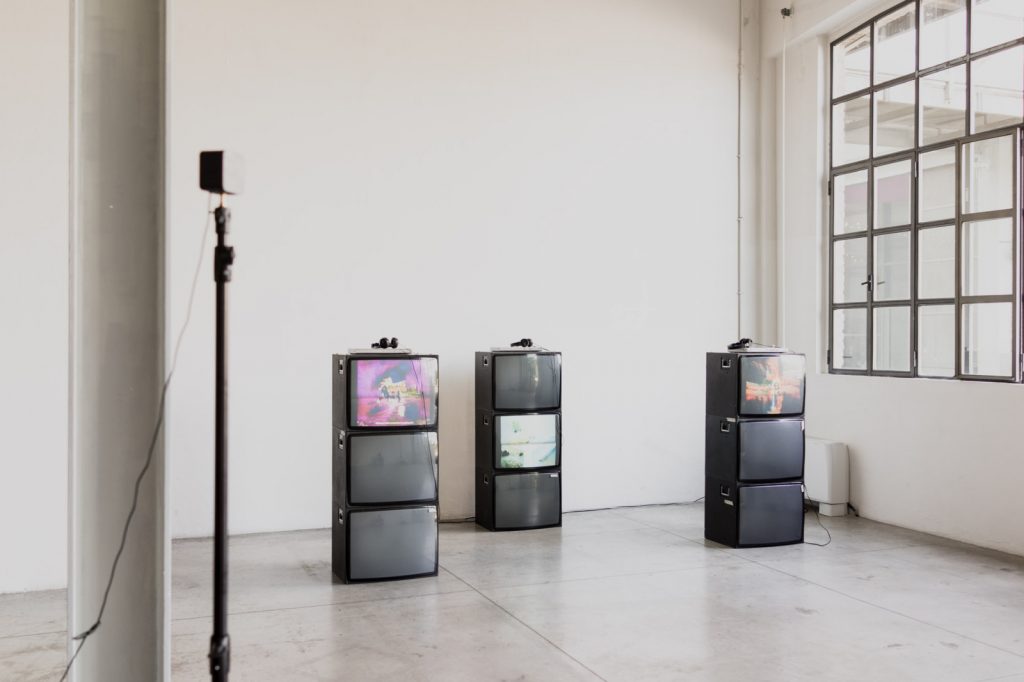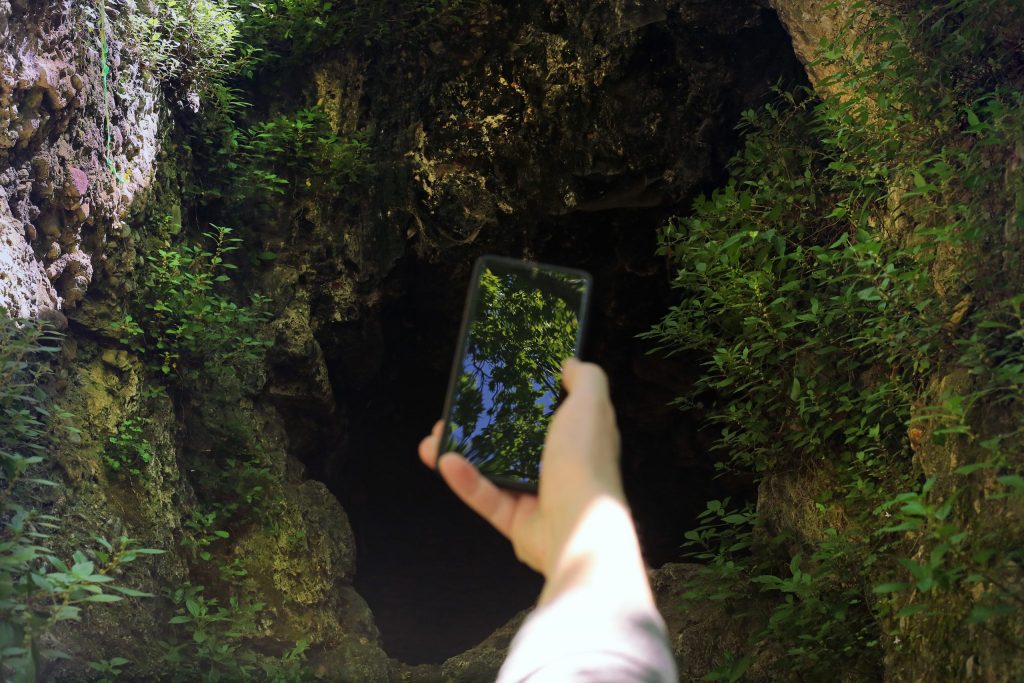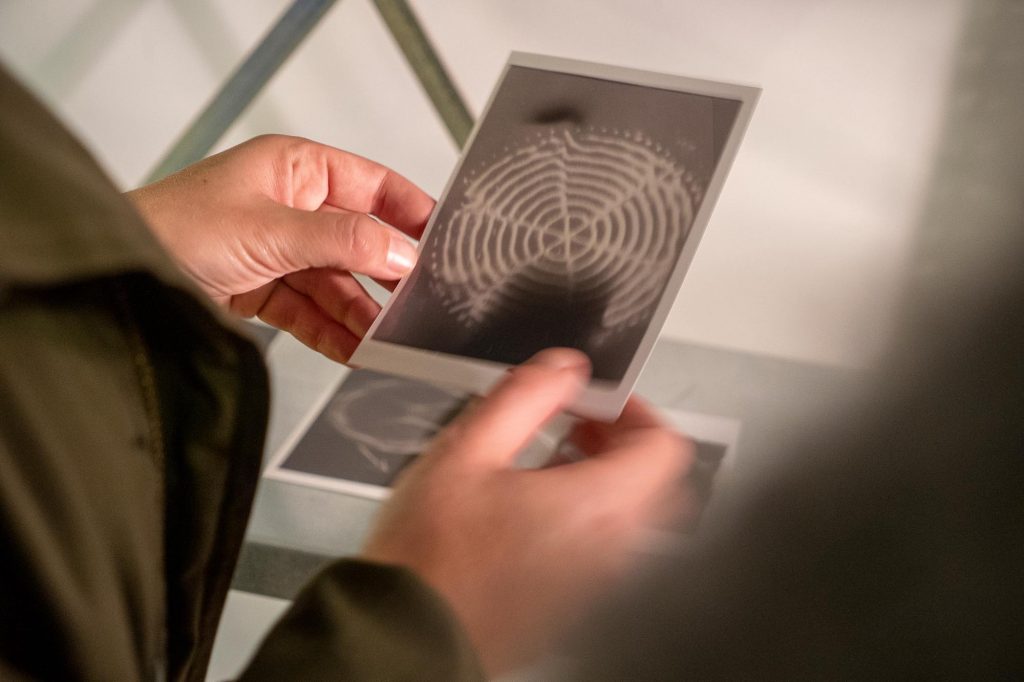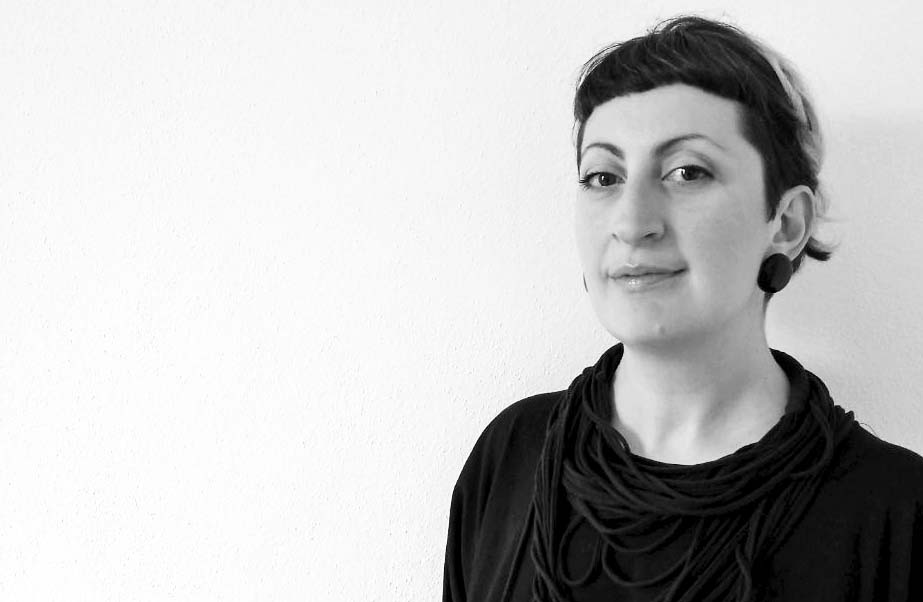CLAUDIA D’ALONZO
Generazione Critica: Looking at your background and the heterogeneity of your fields of interest, such as environmental and audiovisual practices, digital cultures, and poetics of corporeality, is it possible to trace a common thread that guides your role as a researcher and curator?
Claudia D’Alonzo: A central theme is that of the body in relation to technologies. I am interested in investigating how media and technologies generate forms of embodied and sensory experience, ways of inhabiting spaces, understood both as physical and virtual spaces, immersive sonic and visual environments, or linked to the legacies of expanded cinema, as well as places of interaction and intra-action between human and non-human entities.
Another constant belief is the inclination to be interested in liminal and hybrid practices between cinema, visual arts, and music, in often overlooked or under-documented aspects of the history of artistic languages and technology-related practices. These subjects of study often require interdisciplinary reading and analysis tools, and practices that not necessarily happen within the spaces and formats of contemporary art.
Issues and approaches that I recognize in various moments and stages of my journey.

© Il corpo disseminato, ABA Brera, presso Careof, Milano 2022, ph: Diego Mayon
GC: In some ways, the current reality of the art world seems to be inclined towards embracing professionals who do not have distinct boundaries between different roles. There appears to be a growing absence of specific categorization in favor of a more widespread view of roles. What do you think about this blurring of professional boundaries between curators, teachers, artists, researchers, and so on?
CDA: Partly, I believe that the multiplicity of perspectives is inherent to certain types of professions, not just in my own journey. Specifically, those who are interested in liminal practices, which often lack well-defined contexts or formats, often engage as independent individuals, entering and exiting different mixed contexts, such as museums, performative arts, clubbing, social third sector, design, or fashion. They frequently blend with the cultural scenes of the cities or territories in which they work. This condition is often dictated by necessity – seeking financial support rather than finding spaces to organize or propose content. Necessity becomes a virtue, as those involved in hybrid practices learn to do many different things and handle diverse approaches, even within the same project, ranging from writing critical texts to drafting grant applications, from curating an exhibition to performing a DJ set.
As far as I’m concerned, after a few years and specifically in this phase, the different roles represent different facets of the same work, which currently embodies my perfect fit. I would struggle to confine my practice to a single context because I don’t believe I would find the multiplicities that I feel are necessary for my work and that currently nourish me. At least for now, I enjoy this somewhat wandering condition among different expressive languages, cultural circuits, and audiences, which I can independently construct and is populated by temporary encounters and alliances.
However, I want to emphasize that beyond my personal journey, the choice to articulate one’s work across multiple roles and contexts should be a choice rather than a survival strategy. We are well aware that, especially in the beginning, taking on multiple jobs, often poorly paid or unpaid, is the only way to piece together an income. The precarity and economic unsustainability of the artistic sector contribute to unacceptable inequalities, where the ability to choose how to structure one’s work and roles is often tied to privileged conditions of origin and class.
GC: Since 2019, you have been collaborating with the Lydia Prize, an initiative promoted by Il Lazzaretto in Milan. Starting from this year, you will be overseeing all stages of the prize as a curator. This experience is crucial as it allows you to observe the contemporary production of young Italian artists and thus reconstruct a collective scenario. How is the prize changing, and how are your choices within it evolving in response to the currents and stimuli of contemporary art in recent years?
CDA: After starting to collaborate with the Lydia Prize from its second edition as a consultant in the design of the open call and as a juror, this year I am overseeing the curation of both the call itself and guiding the artist throughout the development of their research, as well as the public presentation of their outcomes at the PAC, Pavilion of Contemporary Art in Milan. When Il Lazzaretto asked me to be further involved in the call, I reflected a lot on the possibility of focusing it on a specific theme or area of interest related to my areas of investigation.
Furthermore, thanks to the discussions with the jury composed of Anna Daneri, Mariateresa Chirico, Davide Giannella, Gianni Moretti, Diego Sileo, and Maria Paola Zedda, as well as with some of the artists who have won or participated in previous editions, I decided to propose not to identify a specific theme but to transform the support from a production-based prize to a research-based prize. The intention is to break away from a logic often associated with calls, both for artists and more generally for cultural projects, which requires the generation of thought and output focused on different topics each time. It is well known that organizations, artists, and cultural practitioners, in general, are often compelled to force their practice and the issues they are addressing in order to access sources of support and meet the demand for output and production.
This transformation of the call also appeared to me to be very consistent with the history of previous editions, during which, despite starting from a project idea presented in the application, artists were given maximum flexibility to modify their work in progress. This approach is also in line with the philosophy of the foundation, particularly embodied by President Alfred Drago and Artistic Director Linda Ronzoni, who enthusiastically embraced this transformation.
GC: Considering your new role within the Lydia Prize starting from the 2023 edition, what are the objectives you would like to pursue and how do you wish to influence the curation of the various stages of the prize? Referring to past experiences of the prize, how is the dialogue shaped between different mediators and collaborators?
CDA: For the upcoming editions, the shared intention with the foundation is to enhance the aspect you highlighted, which is the fact that through the call, we have a privileged observatory on the production and research themes of emerging or mid-career authors. This is significant because I often have the opportunity to meet and exchange ideas with many of them even after or alongside the Lydia Prize.
Another trajectory for future growth is collaboration with other art and cultural institutions in Milan and other territories.
GC: The various fields of research in which you have specialized over time have led you to participate in other initiatives such as INBTWN in collaboration with Centrale Fies. Moving into this more specific thematic area, how would you define the positioning and contribution of the Italian scenario, both from a theoretical and a design perspective, in relation to European and non-European activities?
CDA: The collaboration with Centrale Fies began in 2019, following their invitation as part of the Trentino Brand New training program, and it took on a form of project collaboration during the pandemic. From a complex and shared condition that we were experiencing as cultural and artistic communities, a dialogue emerged, particularly with artistic director Barbara Boninsegna and creative director Virginia Sommadossi, as we collectively explored the concept of corporeality from different perspectives and languages.
I was asked to envision interventions and contributions from artists, utilizing online formats but not limited to them. Therefore, I conceived and curated the INBTWN festival, which in its first edition was predominantly, but not exclusively, web based. For Fies, I believe it was an opportunity to expand their exploration of the body in relation to issues that are less prevalent in the rest of their network and technology-related programming. For me, it was an opportunity to experiment with the format of online curation.
The website served partly as a space for showcasing web-native works or reimagined works specifically created for the festival, and partly as an editorial space in two languages for sharing reflections on the artists and the research phases that preceded their work. For example, the artist and choreographer Julien Prévieux’s intervention, “What Shall We Do Next? (Sequence #2)”, involved the presentation of his 2014 film alongside the creation of an online archive. This project was part of the artist’s broader research focused on studying the patented and codified gestures used by technology companies such as Apple and Samsung; or even, the IOCOSE collective, which has rethought the site’s space as an extension of the Martian environments from the video artwork “Pointing at a New Planet” (2020) focusing on the gestures of Elon Musk, SpaceX’s CEO.
In other cases, the website served as a hub for entanglement between different physical locations, such as the live radio dialogue between Elena Biserna and Anna Raimondo across Dro/Centrale, Brussels, Marseille, and Milan in July 2020 as part of their intervention “Ascoltare Attraverso. Interrogare i generi «attraverso» l’ascolto” (Listening Through. Questioning Gender ‘through’ Listening).
The subsequent edition of INBTWN (2021-2022) featured the collective project “Standards,” which focused its research on sound practices and listening. Through two residency periods, the project developed a site-specific intervention for and about Centrale Fies, conceived as a place and an architectural body, a territory, and a community of bodies that inhabit its spaces, transforming them through cultural work and the relationships that animate it.
In various formats: an online sound archive, a performative sound installation, and a score conceived as a series of instructions for listening exercises directed towards both the residents of Fies and its future guests to be performed in various indoor and outdoor spaces of the venue.

© QW.10 tracks of density, Standards, esercizi di ascolto, 2021, ph: Sara Scanderebech
GC: In line with your research, what are the areas of interest that you would like to delve into in the future? Are there any specific projects that you would like to pursue or that you are already working on?
CDA: The theoretical issues and readings that are currently engaging me the most revolve around vocal expression, embodiment, and immersive experiences as ways to explore alternative forms of sensitivity beyond gender binarism or in the perspective of overcoming the boundaries between human and non-human.
Regarding curatorial work, I will be following the development of the project by this year’s Lydia Prize winner, Beatrice Favaretto, and her research, which is part of a broader investigation titled “HDMW – Hold Me While I’m Naked”, initiated in 2019 on the representation of desire and sexuality in contemporary times.
In autumn, I will curate an exhibition by Rachele Maistrello that will bring together, for the first time, the entire “Blue Diamond” cycle in a significant public museum in Milan.
Lastly, regarding my work in academia, in recent weeks, together with colleagues Matteo Cremonesi and Alessandro Mancassola, we are finalizing a theoretical and practical training project titled “How to explain it to my parents.” This project has allowed students to approach the skills necessary to start their artistic and professional careers outside of academia and position themselves within the contexts of contemporary art. The project involved encounters with professionals in the field and portfolio review sessions with curators. As a closing event, there will be a workshop with artist Dafne Boggeri, which will result in a publication created by the participants, focusing on the training journey and the artist’s positioning and role today. This publication will also explore the recognition of artistic practice as a profession and the sustainability of cultural work.

© Rachele Maistrello, Blue Diamond (ciclo), ph: Silvia Gottardi, Courtesy Il Lazzaretto

